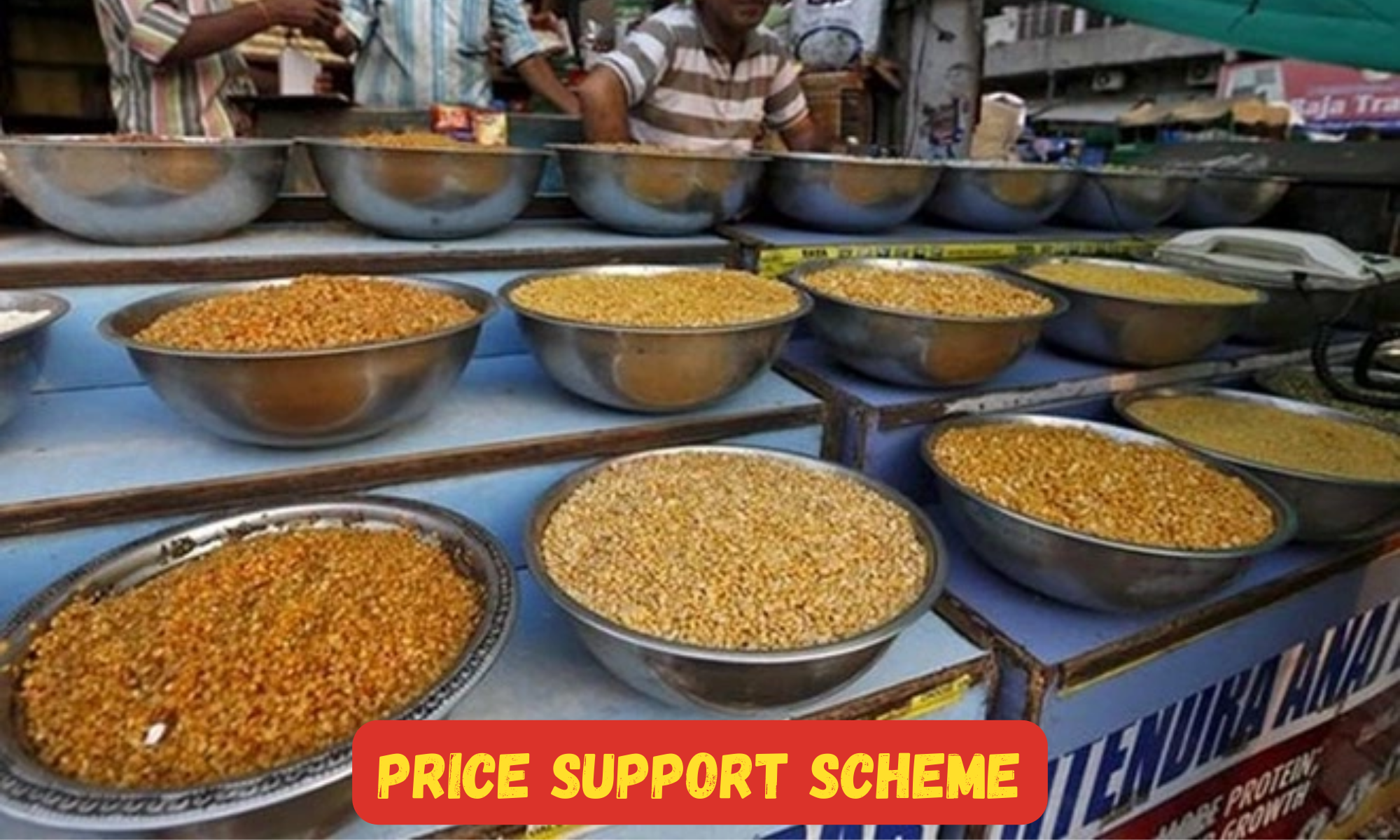Why the Scheme is in News?
The Indian government has eliminated restrictions on the maximum amount of certain pulses that can be procured, as a measure to control inflation and increase the supply. The limits on the procurement of tur, urad, and masoor under the Price Support Scheme operations for the 2023-24 period have been lifted. This decision ensures that these pulses can be purchased from farmers at the minimum support price without any restrictions.
Buy Prime Test Series for all Banking, SSC, Insurance & other exams
The government’s commitment to procuring these pulses at profitable prices will encourage farmers to expand their cultivation of tur, urad, and masoor during the upcoming kharif and rabi sowing seasons, aiming to boost production.
According to economist Teresa Jon from Nirmal Bang Institutional Equities, this is a positive step towards curbing potential inflationary pressures. However, Jon mentioned that the procurement mechanisms for pulses are not as robust as those for cereals and are primarily managed by individual states. While there will be no limit on procurement, the effectiveness of the process will rely on the farmers’ trust in the state’s procurement system.
Introduction:
In an effort to ensure stability and protect the interests of both producers and consumers, governments often implement various agricultural policies. One such policy is the Price Support Scheme (PSS), a mechanism designed to stabilize prices for specific agricultural commodities. This article delves into the concept of the Price Support Scheme, exploring its objectives, functioning, and impacts on the agricultural sector.
What is the Price Support Scheme?
The Price Support Scheme is a government initiative aimed at providing a safety net for agricultural producers by guaranteeing a minimum price for certain commodities. It involves the government purchasing the surplus produce from farmers at a pre-determined minimum price, which is often higher than the prevailing market rate. By doing so, the scheme aims to prevent the prices of these commodities from falling below a certain level.
Objectives of the Price Support Scheme:
The Price Support Scheme serves multiple objectives, including:
a. Ensuring Income Stability: By guaranteeing a minimum price, the scheme provides farmers with a stable income, shielding them from price fluctuations caused by market forces.
b. Encouraging Production: The assurance of a minimum price incentivizes farmers to produce more, as they are assured of a certain level of profitability. This, in turn, contributes to the overall food security of the nation.
c. Buffer Against Market Volatility: The PSS acts as a buffer against extreme price volatility, mitigating the risks faced by farmers and stabilizing the supply of agricultural commodities in the market.
Functioning of the Price Support Scheme:
The Price Support Scheme typically involves the following steps:
a. Identification of Commodities: Governments identify specific commodities that are essential for the economy and susceptible to price fluctuations. These commodities often include staple crops, such as rice, wheat, and maize.
b. Minimum Support Price (MSP) Determination: The government determines the Minimum Support Price (MSP) for each commodity, considering factors such as production costs, market conditions, and farm profitability. The MSP is usually higher than the market price to provide an incentive to farmers.
c. Procurement Mechanism: The government establishes procurement centers or agencies where farmers can sell their produce at the MSP. These agencies purchase the surplus produce and compensate farmers accordingly.
d. Stock Management: The procured produce is then managed by the government, which may store it in warehouses or utilize it for various welfare programs, such as public distribution systems or emergency relief measures.
Impacts of the Price Support Scheme:
The Price Support Scheme has both positive and negative impacts on the agricultural sector and the wider economy:
a. Positive Impacts:
i. Income Security: The scheme ensures a stable income for farmers, reducing the risk of financial distress.
ii. Food Security: By incentivizing increased production, the PSS contributes to enhanced food security and availability of essential commodities.
iii. Market Stability: The scheme helps stabilize prices, preventing extreme fluctuations that can adversely affect both farmers and consumers.
b. Negative Impacts:
i. Market Distortion: The scheme may lead to oversupply and excess accumulation of stock, creating market imbalances.
ii. Cost Burden on Government: Implementing the Price Support Scheme can be financially demanding for the government, requiring substantial budgetary allocations.
iii. Inefficient Resource Allocation: The fixed MSP may discourage farmers from diversifying their crops or exploring more profitable options, potentially hindering agricultural innovation.
Price Support Scheme: Beneficiaries
- Under the MSP scheme, the government sets a minimum price at which it agrees to purchase certain agricultural commodities from farmers.
- This minimum price is intended to provide farmers with assured income for their produce, protect them from market fluctuations, and encourage agricultural production.
- The beneficiaries of the MSP scheme are primarily farmers engaged in the cultivation of MSP-supported crops such as wheat, rice, pulses, oilseeds, and cotton.
- The scheme covers both small and large farmers across various states in India.
- The specific beneficiaries and eligibility criteria may vary from state to state, as agricultural policies are implemented by state governments in coordination with the central government.
Price Support Scheme: Funding Structure
In terms of funding, the MSP scheme is funded through the budgetary allocations made by the central government. The government sets aside a certain amount of funds to procure agricultural produce at the MSP from farmers. These funds are used to cover the costs of procurement, storage, transportation, and other related expenses.
Price Support Scheme: Vision
The Price Support Scheme plays a crucial role in stabilizing agricultural markets, ensuring income security for farmers, and maintaining the availability of essential commodities. While it offers benefits such as income stability and food security, policymakers must carefully consider its potential drawbacks, such as market distortion and budgetary pressures. Striking a balance between price stability and market efficiency remains a key challenge in implementing effective Price Support Schemes worldwide.
Also Read:
- Ayushman Bharat Pradhan Mantri Jan Arogya Yojana: Revolutionizing Healthcare Access in India
- National Mission on Advanced and High-Impact Research (MAHIR)
- Bima Vahak Scheme: Ensuring Financial Security through Insurance
- Pradhan Mantri Jan Aushadhi Yojana: Making Healthcare Affordable for All
Find More News Related to Schemes & Committees



 Who Is Delcy Rodriguez? Venezuela’s Inte...
Who Is Delcy Rodriguez? Venezuela’s Inte...
 US Move on Venezuela's Oil: What It Mean...
US Move on Venezuela's Oil: What It Mean...
 US Military Action in Venezuela: Why Was...
US Military Action in Venezuela: Why Was...







